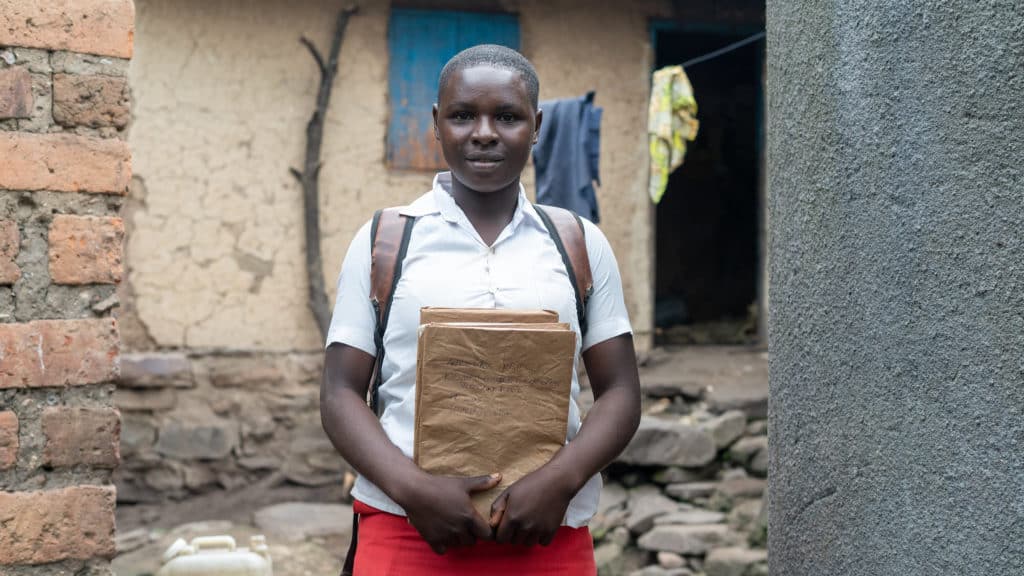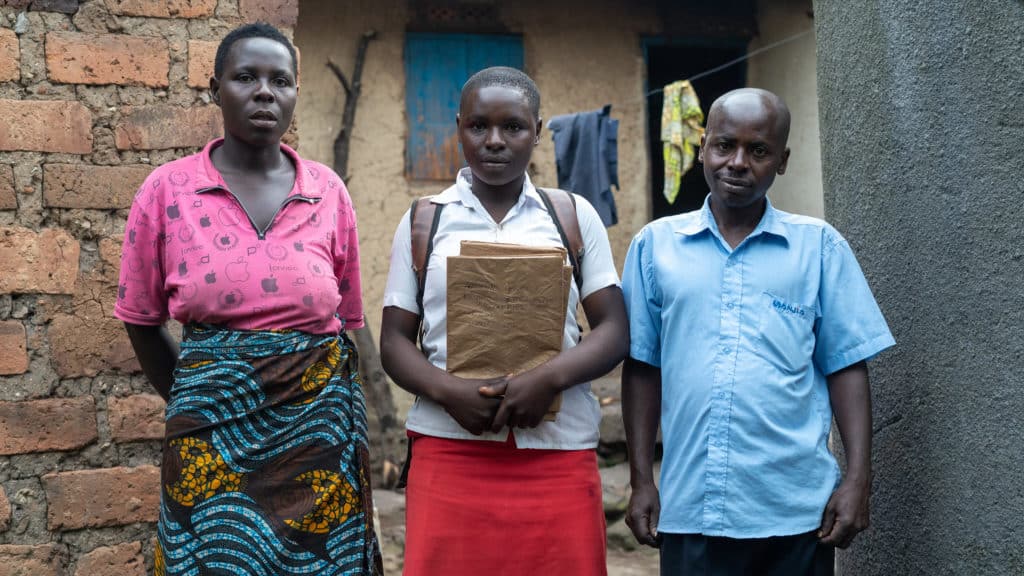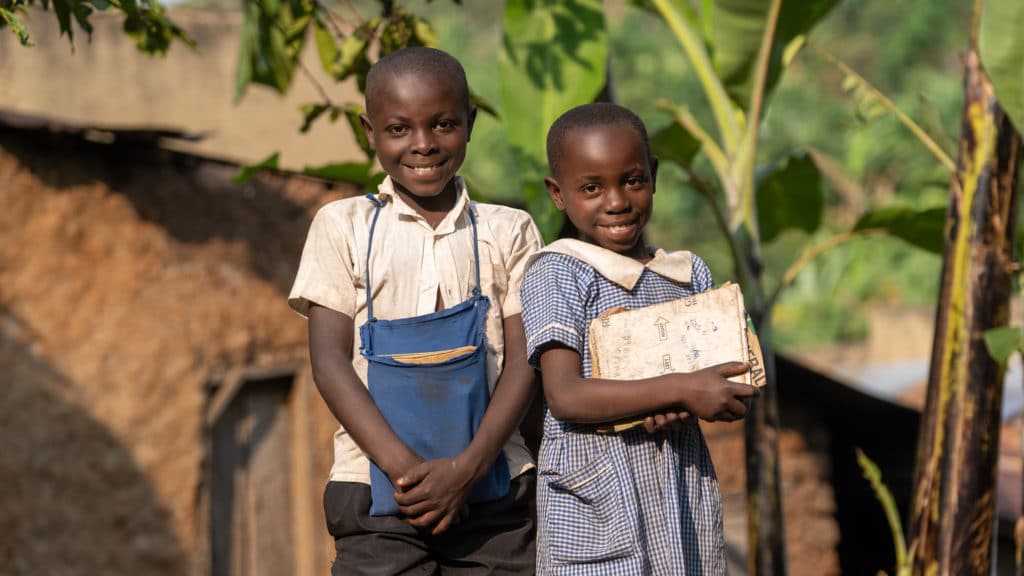The Journey to School
Every morning, 14-year-old Bridget in Katiba Village puts on her uniform, grabs her books and heads off to school. This wasn’t the case two years ago, when Bridget’s family struggled to make a stable income.
Bridget and her younger siblings were sometimes sent back home for not being able to pay the school fees.

Bridget arrives home after a school day in Katiba Village, Kanungu District.
“There was a point when we had no money and my only hope was to acquire a loan to start a business. I had to use my land as collateral.” Samuel, Bridget’s father, narrates. “All the business profit went to paying the high-interest loan back. Eventually it failed, and on top of that, I lost part of my land to the bank.”
In Uganda, children below 18 years of age experience the highest rates of multidimensional poverty (56%). The rates are even higher for those living in households with three or more children (62%), with the rates rural areas as high as 84%¹. This means children like Bridget living in ultra-poor households suffer from social exclusion, poor health outcomes in adulthood, lack of education, and inadequate living standards and are more likely to experience poverty throughout their lives.
From there, the cycle of ultra-poverty passes from one generation to another.
Raising The Village partners with last-mile communities to support them as they break out of ultra-poverty. Through a holistic program, the 24-month partnership focuses on food security, financial inclusion, agriculture, and WASH among others initiatives prioritized by the partner communities. When Samuel’s community partnered with RTV, he started rebuilding his life.
“When Raising The Village started working with my community, they really helped give us a hand up since they started sharing agricultural hacks with us,” Samuel shares, looking over at Bridget as she has her lunch, still in her school uniform.

Bridget and her parents at their home in Katiba Village, Kanungu District.
“I like what Raising The Village is doing with my family! Just like we are taught in school, our parents took part in a training on having a clean compound, toilet, and drinking clean, boiled water.” Bridget states confidently. “We also got vegetables that are rich in nutrients that protect our bodies from diseases.”
Samuel is also able to rely on Katiba Agriculture Village Savings and Loans Association (VSLA) for additional support for paying school fees for his children. This community-led group was formed as part of RTV’s program. All community members received several training sessions on financial literacy, VSLA establishment, goal-setting, savings, budgeting as well as gender-equitable decision making.
“Every time we sell some of our harvests, we save some money in the VSLA which later supports our family.” Samuel details. “At the beginning of this school term, I borrowed UGX 50,000 ($13) to enroll my youngest children in school.”
When members of a partner household participate in the programs, it benefits the entire household and creates a multiplier effect for the generations to come.
“I aspire to buy more land so that I generate enough harvests and income to keep my children in school. I hope that they will become the teachers or doctors of our village,” Samuel confides.

Bridget’s little siblings return home from school.
When every household in every village is able to break the cycle of ultra-poverty, youngsters like Bridget will be able to create the future that they deserve.
¹ Going Beyond Monetary Poverty Uganda’s Multidimensional Poverty Profile, 2020

